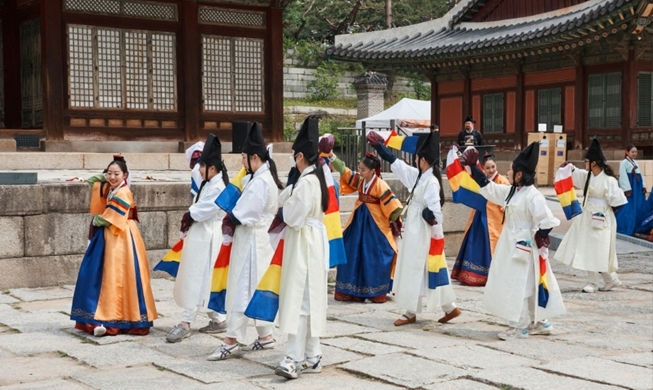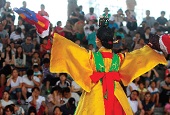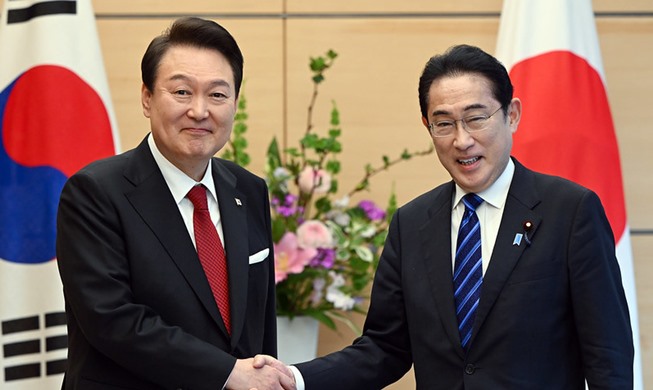-
 Korea.net's 24-hour YouTube channel
Korea.net's 24-hour YouTube channel- NEWS FOCUS
- ABOUT KOREA
- EVENTS
- RESOURCES
- GOVERNMENT
- ABOUT US
View this article in another language
- 한국어
- English
- 日本語
- 中文
- العربية
- Español
- Français
- Deutsch
- Pусский
- Tiếng Việt
- Indonesian
The love of traditional Korean music has spread to Sheffield, England.
Lately, interest in South Korea has been very high among students at the University of Sheffield in South Yorkshire, England. In England, only three universities offer Korean as a major, and the University of Sheffield is one of them. Around the campus, one can easily meet the students who study Korean, as well as other students who are interested in things Korean.
Students from all over the world get together in Sheffield to share their love for Korea. Let’s hear one of their stories.
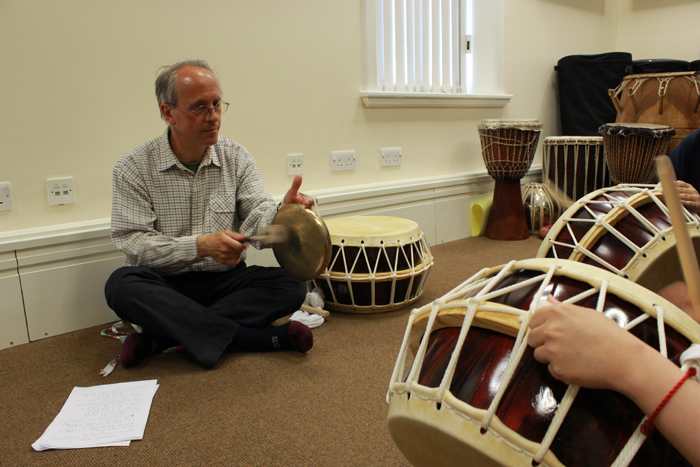
The Music Department at the University of Sheffield offers a weekly samulnori class where students practice with traditional Korean drums and gongs. The class is led by Dr. Andrew Killick who is a senior lecturer in ethnomusicology. He has a special interest in Korean music which is why he wanted to start the class.
He is teaching the art of samulnori to students interested in traditional Korean music. The students enjoy learning to play the four samulnori instruments – the small gong (kkwaenggwari), the large drum (buk), the double headed drum with a narrow waist (janggu) and the gong (jing).
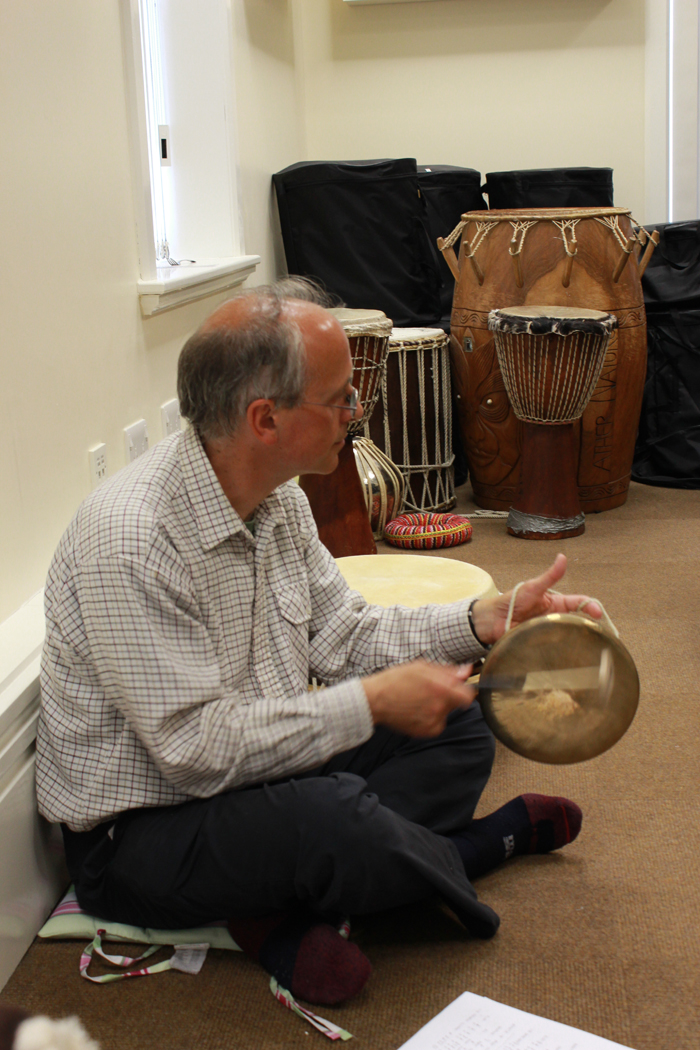
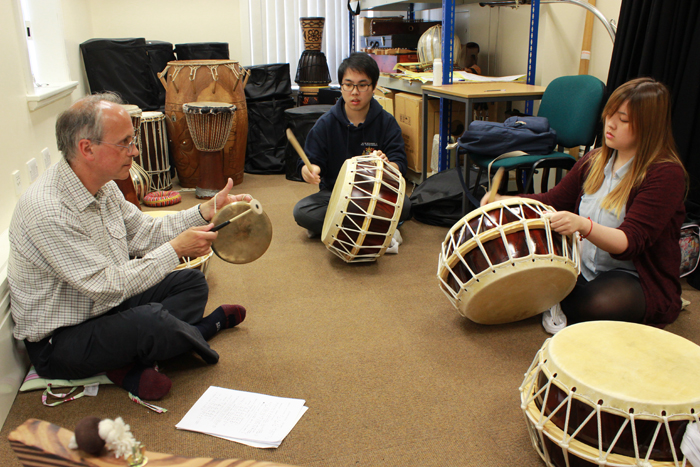
Geoffrey, one of Killick's students, attended Korean Language School for two years and he is greatly interested in traditional Korean music.
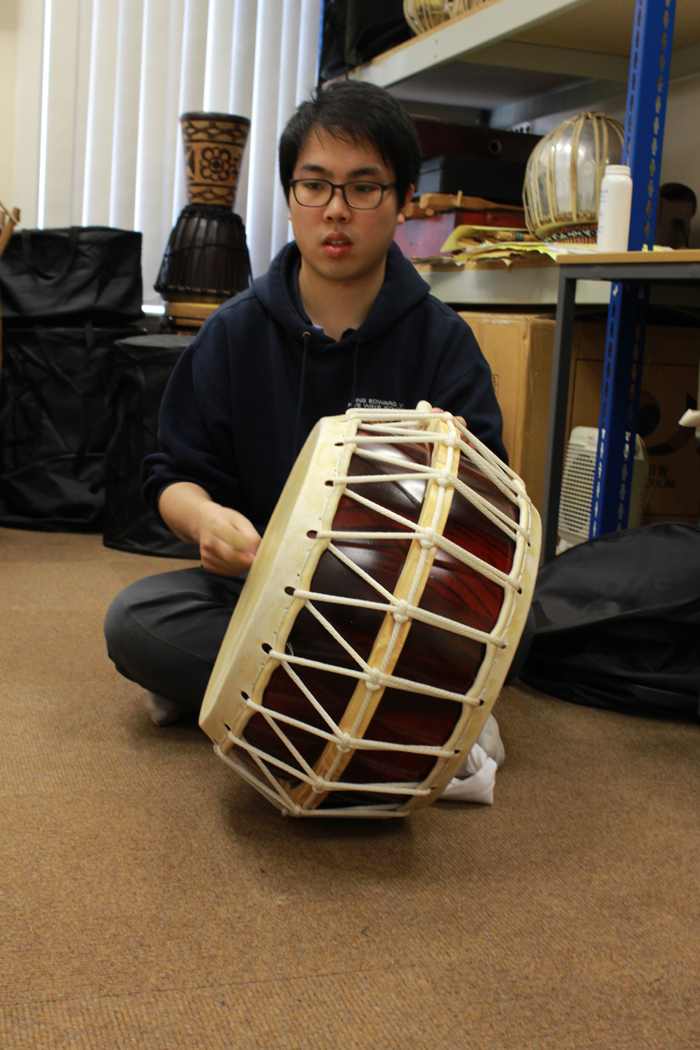
- How did you start learning traditional Korean samulnori drum music?
I first came across samulnori when I attended language school in Korea. I tried it during one of the cultural experience days, and realized that it's lots of fun. Since then, I wanted to learn more about it. However, there was no chance to learn samulnori until I came back to England. To my great surprise, I found a class at our own university.
- What do you think is particularly enjoyable about playing samulnori?
A. I think the fact that even people who are not familiar with samulnori can easily follow the rhythm and learn to play it is especially cool. The large drum and the gong are relatively easy and fun to learn. If there is a chance to continue studying samulnori next semester, I will definitely want to try to play the small gong. Playing the small gong, or kkwaenggwari, looks quite difficult, but I think I want to try something a bit more difficult next time.
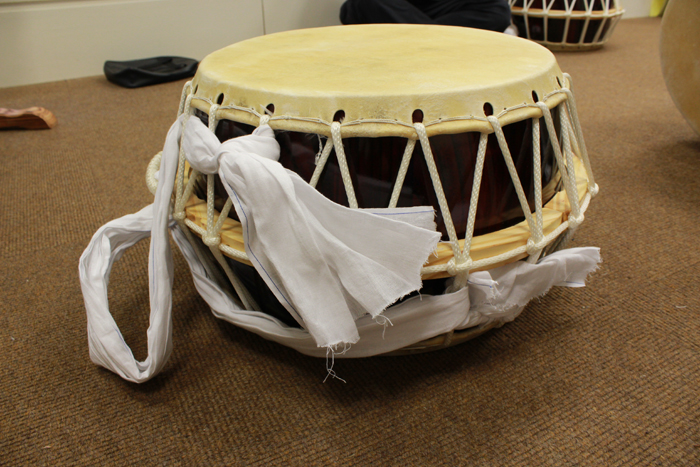
Karwei, seen playing the large drum, says, “When I went to Korea I had a chance to see a samulnori performance. When I heard that there is a samulnori class at our university, I decided to take part. The large drum has a special charm which is different from a standard drum. I also like the harmony that the four instruments create.”
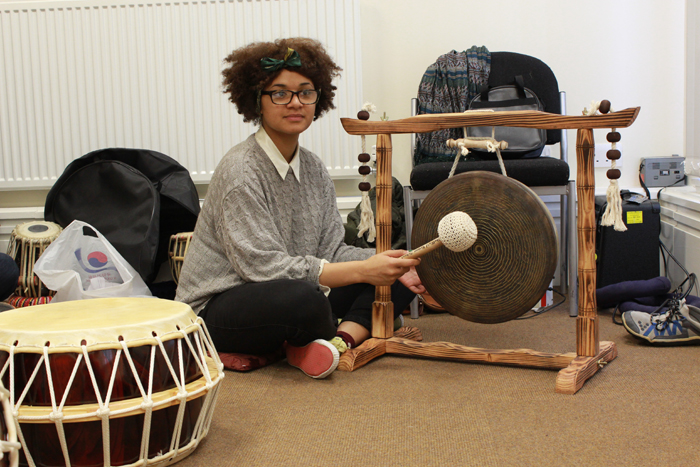
Students attend their ethnomusicology class regularly and make every effort to learn the art of traditional Korean percussion instruments.
Killick says, “The students usually start learning from the large drum and the gong, since they are the easiest ones, but after that they can move on to the small gong and the double-headed drum, which can be more difficult to handle."
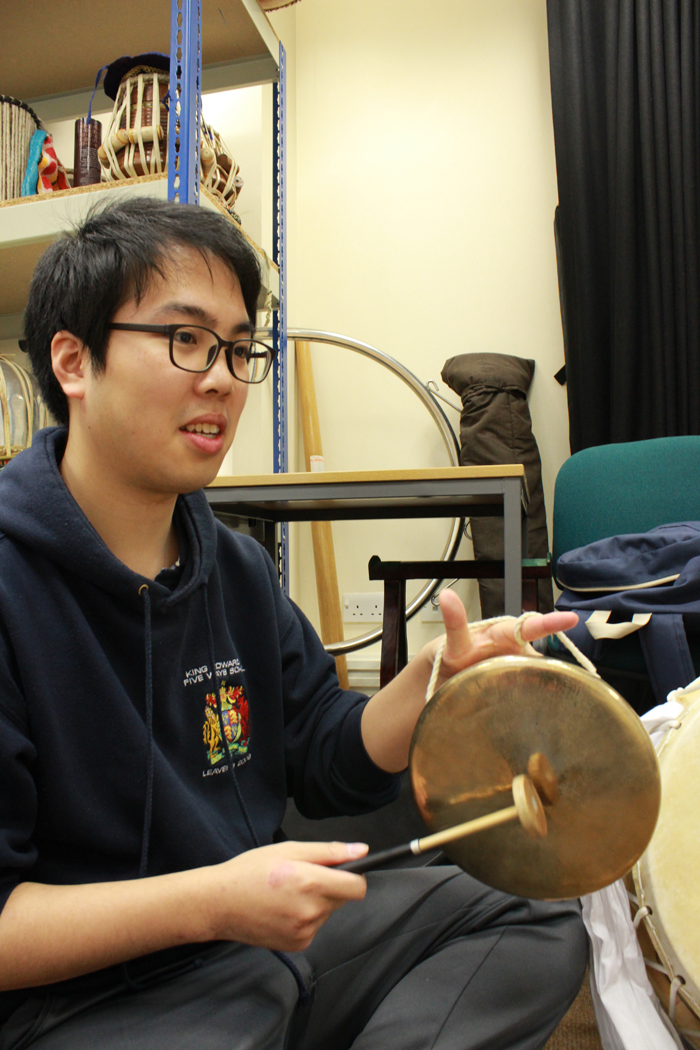
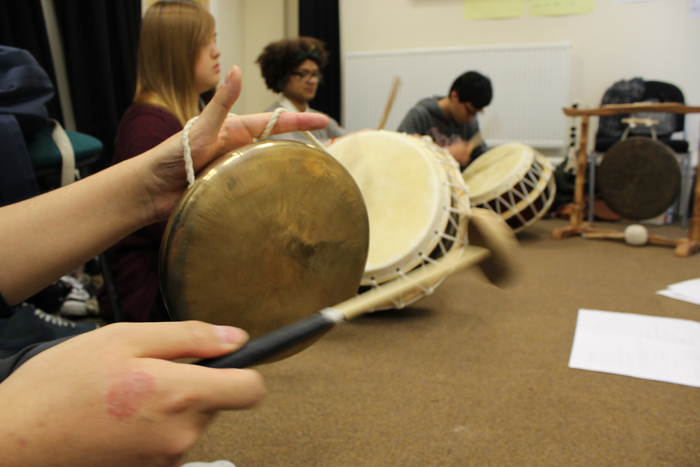
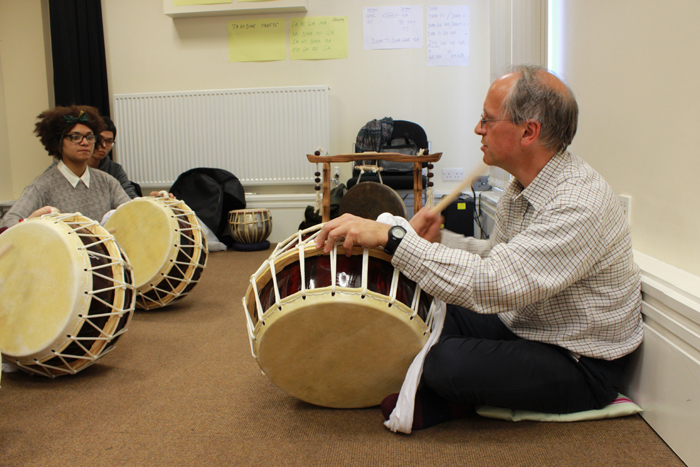
To watch the students practice, please click on the adjacent link (http://www.youtube.com/watch?v=kQtAjABRjQo&feature=youtu.be).
To be honest, it's not easy to learn samulnori in Korea, either, so I am deeply impressed by the interest and enthusiasm that these non-Korean students have shown toward samulnori. While writing this article and watching the students practice their samulnori skills, I thought that it would be great to provide students who are interested in Korean music with more chances to directly practice samulnori and other traditional arts.
Such chances would be great for both non-Koreans in Korea and especially for non-Koreans in other countries who enjoy traditional Korean music, but who have not yet had the chance to experience it directly. I hope that in the future there will be a wide range of programs on offer so that people who love traditional Korean music and who love all things Korean will be able to keep up their interest and affection for the country.
Written by Choi Yoo Kyung on Korea. Content may not be reproduced unless authorized. All pictures are copyright of Choi Yoo Kyung On Korea.
Lately, interest in South Korea has been very high among students at the University of Sheffield in South Yorkshire, England. In England, only three universities offer Korean as a major, and the University of Sheffield is one of them. Around the campus, one can easily meet the students who study Korean, as well as other students who are interested in things Korean.
Students from all over the world get together in Sheffield to share their love for Korea. Let’s hear one of their stories.

The Music Department at the University of Sheffield offers a weekly samulnori class where students practice with traditional Korean drums and gongs. The class is led by Dr. Andrew Killick who is a senior lecturer in ethnomusicology. He has a special interest in Korean music which is why he wanted to start the class.
He is teaching the art of samulnori to students interested in traditional Korean music. The students enjoy learning to play the four samulnori instruments – the small gong (kkwaenggwari), the large drum (buk), the double headed drum with a narrow waist (janggu) and the gong (jing).


Geoffrey, one of Killick's students, attended Korean Language School for two years and he is greatly interested in traditional Korean music.

- How did you start learning traditional Korean samulnori drum music?
I first came across samulnori when I attended language school in Korea. I tried it during one of the cultural experience days, and realized that it's lots of fun. Since then, I wanted to learn more about it. However, there was no chance to learn samulnori until I came back to England. To my great surprise, I found a class at our own university.
- What do you think is particularly enjoyable about playing samulnori?
A. I think the fact that even people who are not familiar with samulnori can easily follow the rhythm and learn to play it is especially cool. The large drum and the gong are relatively easy and fun to learn. If there is a chance to continue studying samulnori next semester, I will definitely want to try to play the small gong. Playing the small gong, or kkwaenggwari, looks quite difficult, but I think I want to try something a bit more difficult next time.

Karwei, seen playing the large drum, says, “When I went to Korea I had a chance to see a samulnori performance. When I heard that there is a samulnori class at our university, I decided to take part. The large drum has a special charm which is different from a standard drum. I also like the harmony that the four instruments create.”

Students attend their ethnomusicology class regularly and make every effort to learn the art of traditional Korean percussion instruments.
Killick says, “The students usually start learning from the large drum and the gong, since they are the easiest ones, but after that they can move on to the small gong and the double-headed drum, which can be more difficult to handle."



To watch the students practice, please click on the adjacent link (http://www.youtube.com/watch?v=kQtAjABRjQo&feature=youtu.be).
To be honest, it's not easy to learn samulnori in Korea, either, so I am deeply impressed by the interest and enthusiasm that these non-Korean students have shown toward samulnori. While writing this article and watching the students practice their samulnori skills, I thought that it would be great to provide students who are interested in Korean music with more chances to directly practice samulnori and other traditional arts.
Such chances would be great for both non-Koreans in Korea and especially for non-Koreans in other countries who enjoy traditional Korean music, but who have not yet had the chance to experience it directly. I hope that in the future there will be a wide range of programs on offer so that people who love traditional Korean music and who love all things Korean will be able to keep up their interest and affection for the country.
Written by Choi Yoo Kyung on Korea. Content may not be reproduced unless authorized. All pictures are copyright of Choi Yoo Kyung On Korea.
Related Contents
Most popular
- China warmly welcomes first Korea-born giant panda Fu Bao
- First hearing-impaired K-pop act hopes for 'barrier-free world'
- Novelist Hwang's 'Mater 2-10' shortlisted for Int'l Booker Prize
- Expats could account for 7% of population in 20 years: report
- Nat'l Fire Agency picks 137 elite staff for deployment abroad








